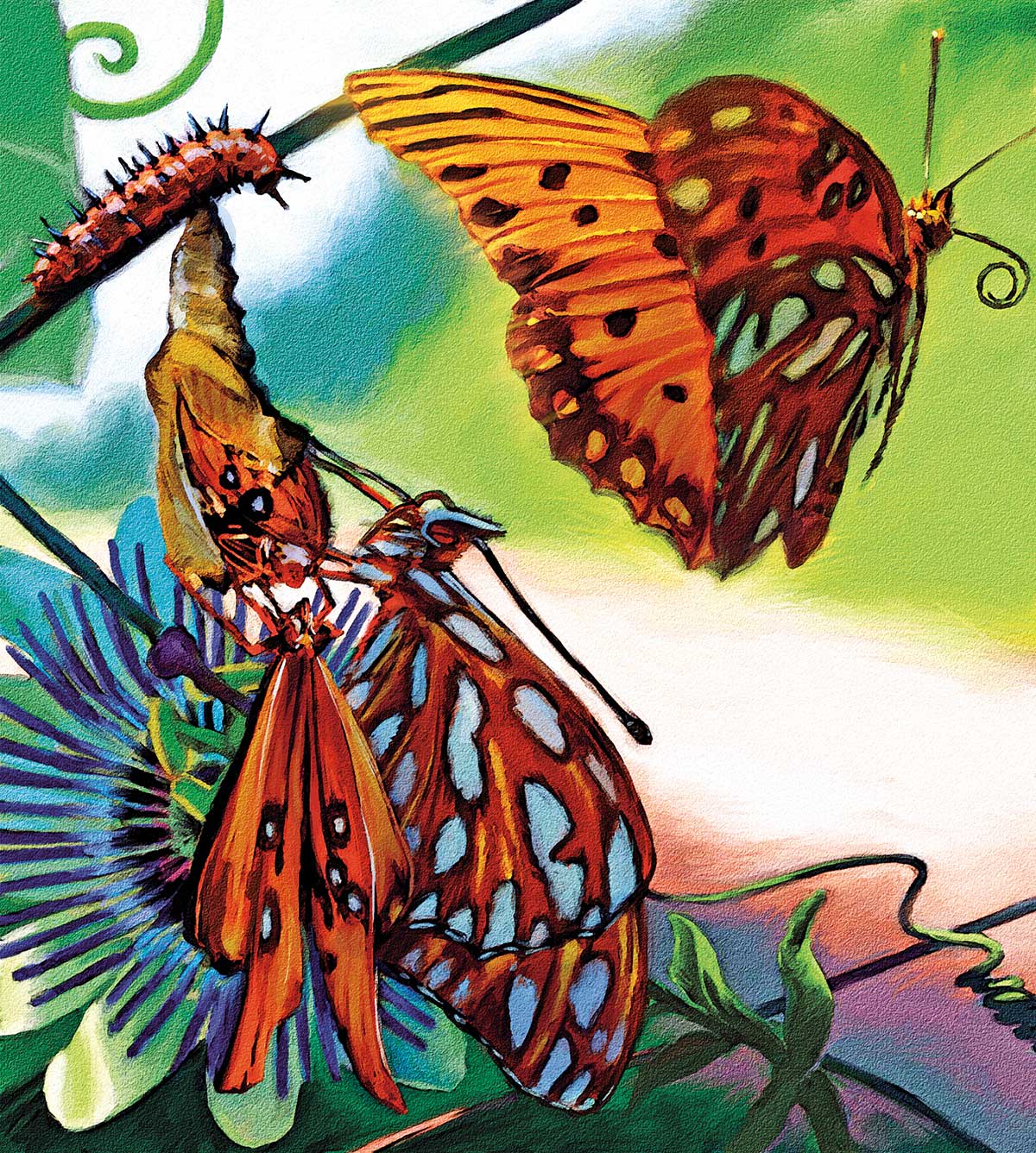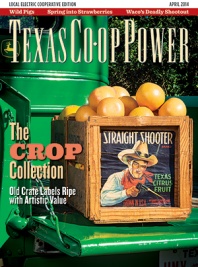The irrigation contractor was checking the sprinkler heads. “Say, do you know your plant is covered with caterpillars?” he asked with some dismay. His brow furrowed with a quizzical look; he clearly couldn’t believe I hadn’t noticed. He was ready to call in the fumigators. Indeed, hundreds of caterpillars lolled about on the bushy vine, and I couldn’t have been happier.
You see, my backyard in Colleyville is a preferred spawning ground of the local Gulf fritillary butterfly population. I call it my butterfly farm. It’s not licensed, certified or in any way official. It started off as my backyard, became my garden, and with the addition of one native passion vine, it evolved into a haven for Gulf fritillaries to fulfill their life cycle.
Butterflies require specific plants when it comes to laying eggs. Monarchs require milkweed. Swallowtails need parsley, dill or fennel. Gulf fritillaries need passion vine. It’s the only plant their caterpillars eat. Without passion vine, they would be no more.
The first season, my passion vine grew to epic proportions. It clearly relished its place in the sun, trellised against a stone wall. It flowered beautifully, too. Pretty orange butterflies constantly danced about it, alighting momentarily on a leaf or a tendril before flitting away. Eventually, when the leaves began disappearing, I figured out what those spring beauties were doing when they rested their weary selves on my plant! I soon had a vine full of hungry caterpillars, and walls, lawn furniture and plant pots dotted with chrysalides.
Several seasons later, my vine has withstood the annual rapid growth and gradual defoliation of every summer and fall, and I have tallied hundreds of new Gulf fritillaries.
Giving over my passion vine to the butterflies has cost me nothing and repays me with joy and a constant reminder of some of life’s most valuable lessons:
Listen to your instincts. A caterpillar knows its purpose in life: eat, eat and eat some more. Then one day, it stops. It drops off the vine, crawls to a vertical object and climbs.
Tenacity triumphs. Once it decides on a roost, the caterpillar spins a tiny silk pad with its mouth. Then comes the hard part. It must turn around and catch the silk pad with claspers on its back end, for a caterpillar must hang upside down to form a chrysalis. Once, I watched a caterpillar locate the pad with its mouth, turn around and feel for the pad with its claspers, but fail to connect. It did this repeatedly nine times as I watched. On the 10th attempt, it went back to the silk pad and began to rework it. I gave up. It didn’t. The next morning, a glistening chrysalis marked its success.
Hard work is necessary. When a butterfly first emerges from its chrysalis, it looks like a wadded mess. Immediately the wings unfurl, all ruffled and crumpled. The first time I saw one emerge, I nearly wept for its “deformity.” But as the butterfly clings to its papery perch, the empty chrysalis, its floppy wings fill with hemolymph, a blood-like liquid, ironing out the wrinkles. It pumps its new wings repeatedly to move the liquid and dry the moisture from its rebirth. Without this effort, the butterfly would never be able to fly.
Transformation is always possible. In its short life of only a couple of months, a Gulf fritillary changes from a tiny, barrel-shaped yellow egg to a fat, blue-striped, reddish caterpillar sporting black spikes to a cream-in-my-coffee-colored chrysalis to a large butterfly with an orange backside and silver underside. It’s had several lives in one.
Something can go wrong at every turn. Eggs rot. Wasps, cardinals and wrens eat caterpillars. Pupating goes awry and the chrysalis never forms. Some chrysalides are attacked by gnat-like insects or simply disappear in the night. Lizards nab the newly hatched, and some butterflies, indeed, are born with misshapen wings that never find lift.
So, when a butterfly emerges successfully and flies away—victory! “Welcome to the world,” I murmur.
——————–
Susan Hayden Kennedy is a writer from Colleyville.


